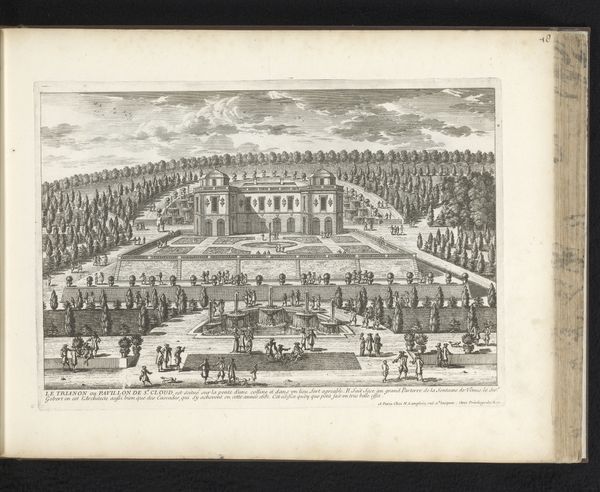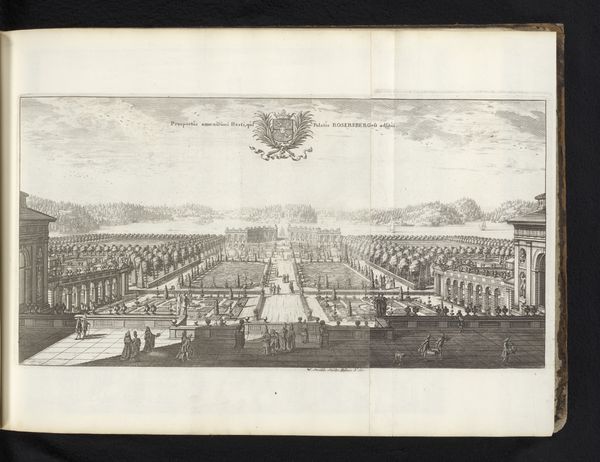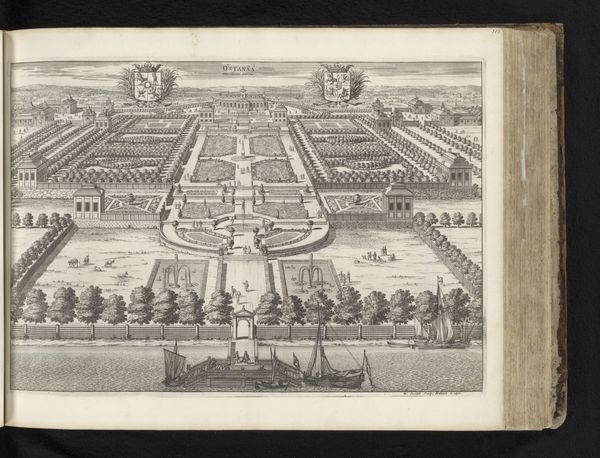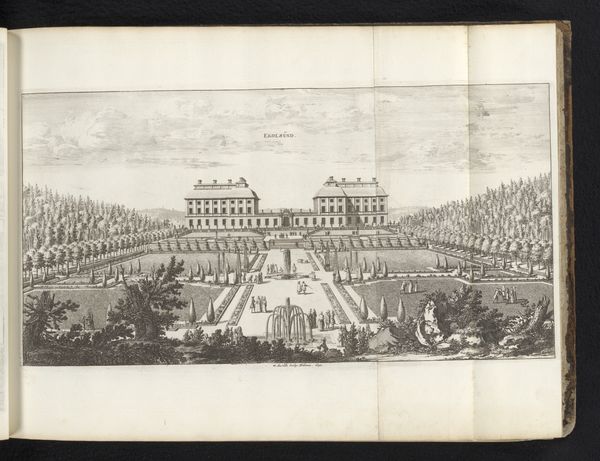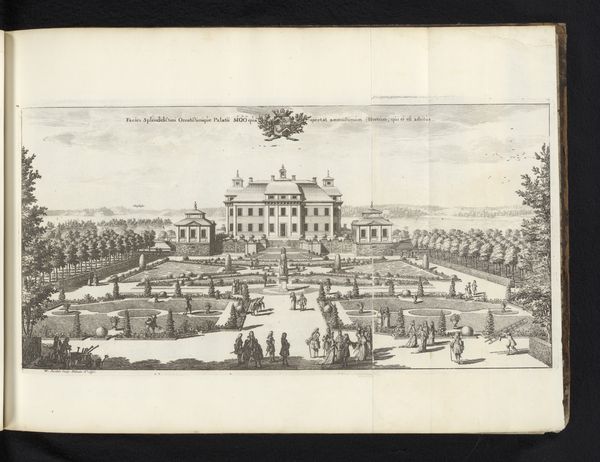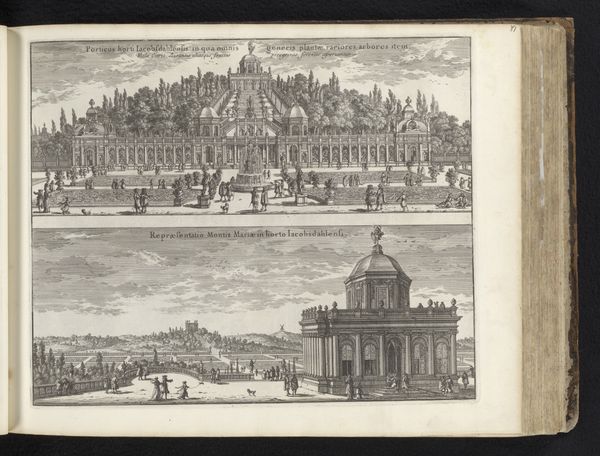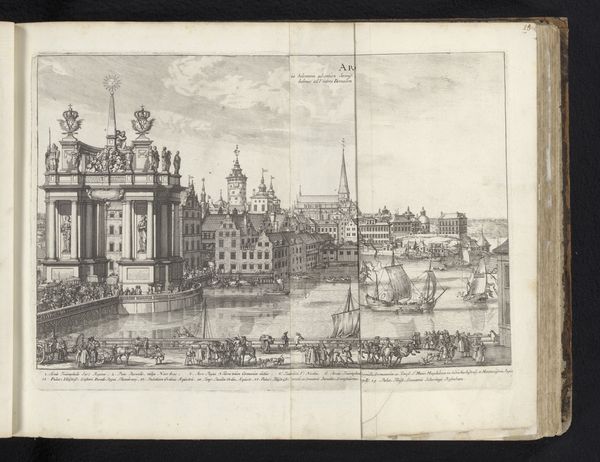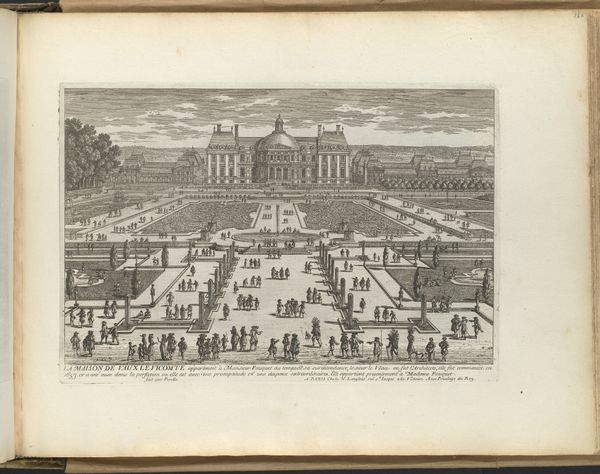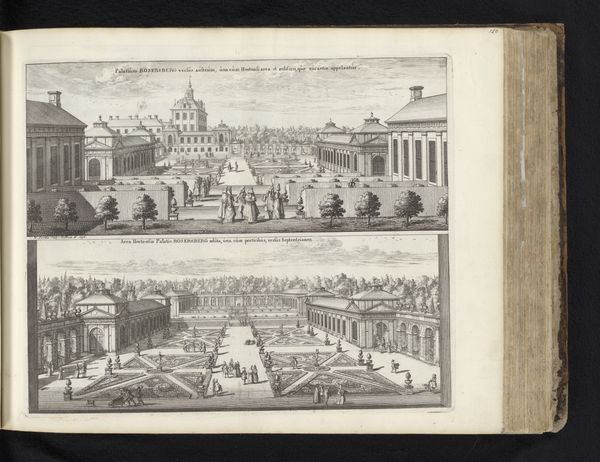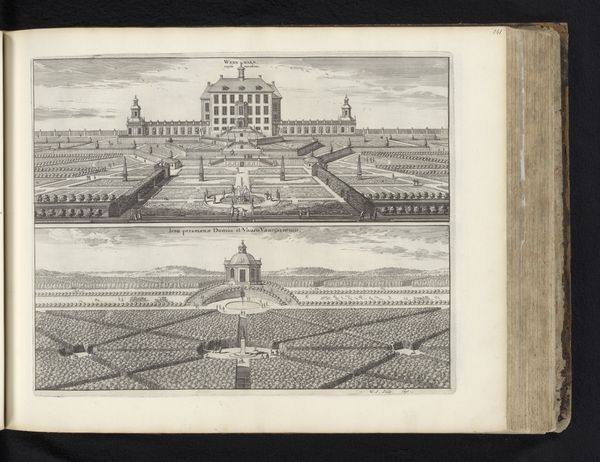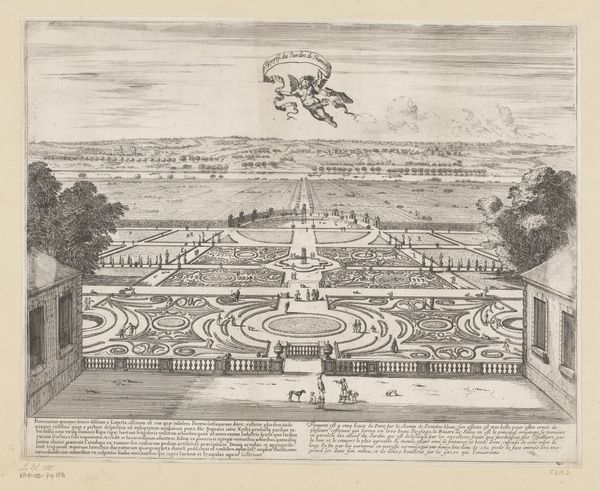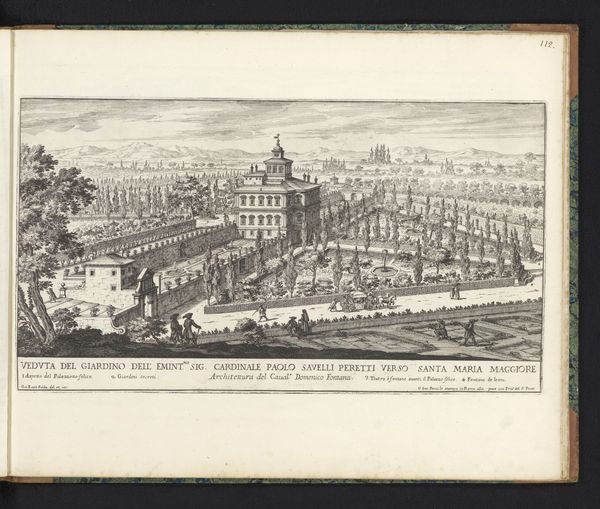
drawing, print, engraving, architecture
#
drawing
#
baroque
# print
#
landscape
#
engraving
#
architecture
Dimensions: height 215 mm, width 423 mm
Copyright: Rijks Museum: Open Domain
Editor: Here we have Willem Swidde's "Gezicht op slot Rosersberg, tuinzijde," a drawing and engraving from 1695, showcasing a landscape and architecture. I'm struck by the formality and rigid structure of the gardens; what can you tell me about it? Curator: It's a powerful depiction of constructed space, isn't it? Think about this rigid formality not just as aesthetics, but as a reflection of power structures. The Baroque period, which this drawing exemplifies, used art and architecture to demonstrate control – control over nature, control over society. These gardens weren't just for beauty; they were performative spaces that mirrored social hierarchies. Who do you think these spaces were designed for, and who do you think was excluded? Editor: That's interesting. So the meticulously designed landscape wasn’t simply about aesthetics but a demonstration of wealth and dominance for a select few. I guess the precision shown indicates a kind of status? Curator: Exactly! Consider also the labour involved. Whose backs built this garden? Whose hands maintained it? Art, even seemingly 'peaceful' landscapes like this, can reveal inequalities when we start asking these questions. Do you notice how the figures within the landscape are arranged and positioned? Editor: The people are dwarfed by the architecture. They almost look like they are staged within it to emphasise it. Almost dehumanised within it! Curator: Precisely. So, what have we learned here about the power dynamics at play? Editor: It highlights how even seemingly tranquil landscapes can reinforce societal structures of power, control, and, essentially, class difference. Curator: Absolutely. By acknowledging these power structures, we resist perpetuating narratives that obscure the voices of those who are typically written out of history.
Comments
No comments
Be the first to comment and join the conversation on the ultimate creative platform.
